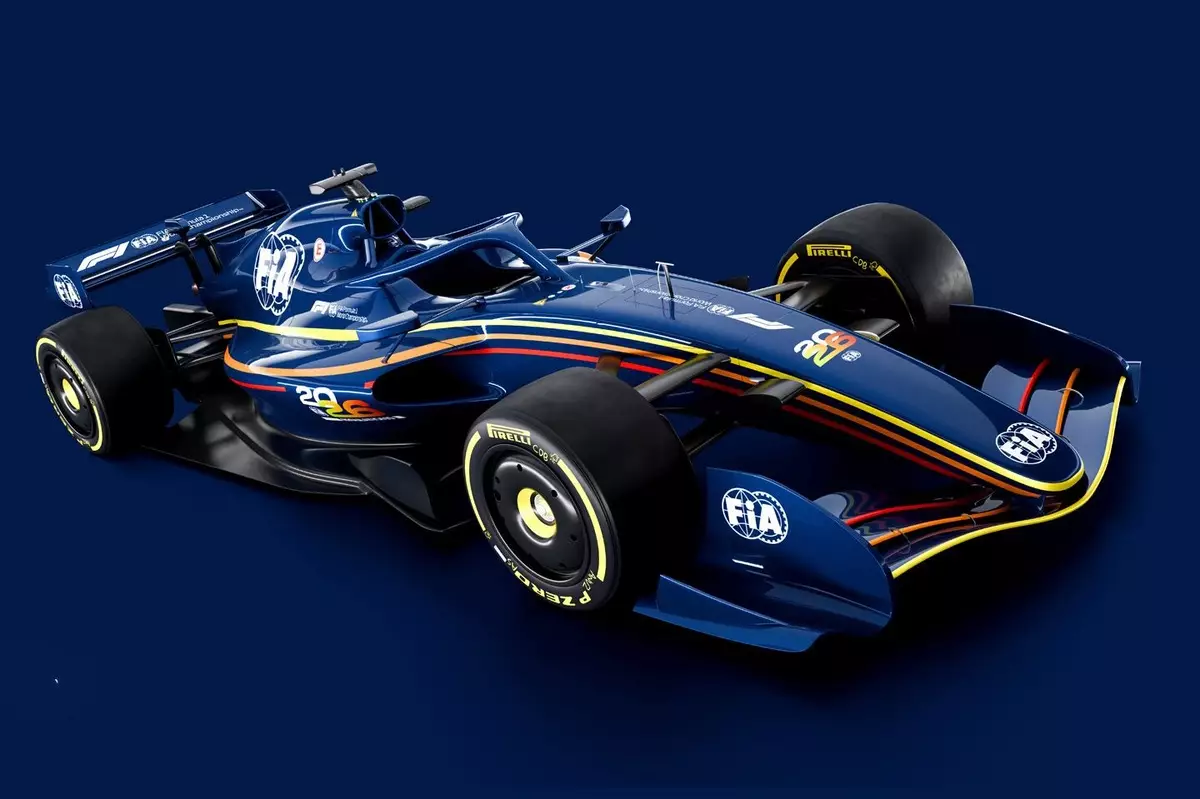The anticipated regulatory changes set for 2026 signal a new era in Formula 1, challenging longstanding perceptions about performance and excitement. Unlike previous overhauls, this shift is not merely a tweak but a comprehensive redefinition of how F1 cars are designed, driven, and experienced. It’s a move that promises to reshape the sport’s core, emphasizing not just raw speed but strategic finesse and adaptability.
One of the most immediate consequences of these regulations is the alteration in lap times. While purists often obsess over outright speed, the truth is that the new vehicles will essentially trade raw acceleration for nuanced performance in corners. Increased straight-line speed due to less downforce may initially suggest faster races, but in practice, the cars will handle differently, requiring drivers to adopt new techniques. The overall pace might slow down marginally, yet this should not diminish the thrill; instead, it offers a chance for drivers to showcase their adaptability and strategic thinking.
More importantly, these changes will recalibrate the competitive landscape. Teams that master the intricacies of the new aerodynamics and power management will have a distinct advantage. It’s about finesse rather than brute force—embracing the complexity of active aerodynamics and innovative boost systems. This transition opens the door for a broader spectrum of skills, elevating the sport from mere speed to a sophisticated chess match on wheels.
Rethinking Performance Metrics and Fan Engagement
The obsession with lap times has often overshadowed the broader picture of what makes racing compelling. Yet, industry insiders like FIA’s Nikolas Tombazis suggest a paradigm shift. Once drivers and fans become accustomed to the new cars, the initial focus on delta times will fade. Speed, after all, is only part of the story; racing is about overtakes, positioning, tire management, and real-time strategic decisions.
Tombazis’s perspective reveals a mature understanding—that the essence of racing lies in the unpredictability and the craft. The concern that slower lap times may dampen interest is misguided. If anything, the regulations encourage a more dynamic form of racing, where overtaking is less about exploiting DRS and more about skillful use of active aerodynamics and boost modes. The emphasis is now on racecraft, resilience, and strategic ingenuity rather than mere pace.
This is a significant philosophical shift, emphasizing the sport’s evolution from a speed-centric spectacle into a test of intelligence and adaptability. Fans will be incentivized to pay closer attention to nuance, turning every lap into an intricate dance of tactics. In this new landscape, racing quality is measured by entertainment value and skill, not just lap times on a scoreboard.
Innovating the Art of Overtaking
Perhaps the most transformative aspect of the 2026 reforms is the elimination of DRS, which has been a contentious fixture in modern racing. Instead, the sport is adopting active aerodynamics that grant drivers a low-drag configuration on straights and introduce a Manual Override Mode—akin to a “push-to-pass” mechanism.
This new overtaking strategy aims to elevate the challenge, balancing power and control to make passing both feasible and rewarding without turning overtakes into mere button presses. It’s a deliberate move to craft a more skill-intensive process. Drivers won’t simply flick a switch and surge ahead; they will need to exploit track knowledge, tire condition, and their ability to time the boost precisely.
From a strategic perspective, this shift encourages more nuanced race management. Teams will focus on maximizing efficiency and positioning rather than relying solely on aerodynamic drag reduction. The competition becomes a deeper test of driver intuition, car setup, and tactical planning. The overtaking process will be less about overt speed bursts and more about setting up multi-layered strategies—further elevating the cognitive aspect of racing.
The Promise of Evolution Over Immediate Changes
While initial simulations suggest these new cars will be marginally slower, the promise is for rapid evolution. As teams adapt to the technical regulations, performance gaps will narrow, and racing will become increasingly close. This fluidity is vital; it denies complacency and rewards ingenuity.
However, skepticism persists about the long-term performance landscape. The lack of comprehensive data from all teams at this stage raises questions about how well the intended balance will be preserved. Yet, this uncertainty fuels a compelling narrative: a sport always on the brink of transformation, where innovation is driven by regulation as much as by technology.
The broader implication is that Formula 1 is moving beyond just being a speed contest. It is embracing complexity, technological ingenuity, and strategic sophistication, making the sport more engaging for those willing to look beyond the stopwatch. In this future, the car’s raw pace is secondary to how well the driver and team navigate a complex web of opportunities and challenges—a true test of mastery and ingenuity.
In essence, Formula 1’s 2026 overhaul signifies not just a new technical chapter but an evolution of racing philosophy itself. It promises a sport where brains matter as much as brawn, and where every lap can be a masterclass in strategy. If successfully implemented, this transformation will set a new standard for motorsport—a thrilling blend of technology, tactics, and human skill that reignites the passion of fans and competitors alike.


Leave a Reply